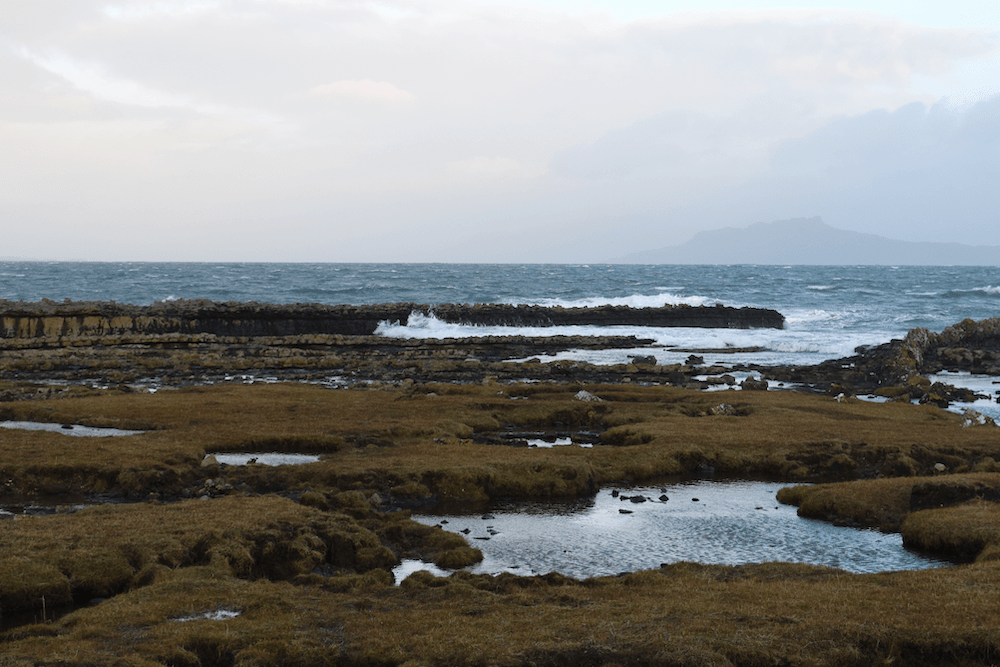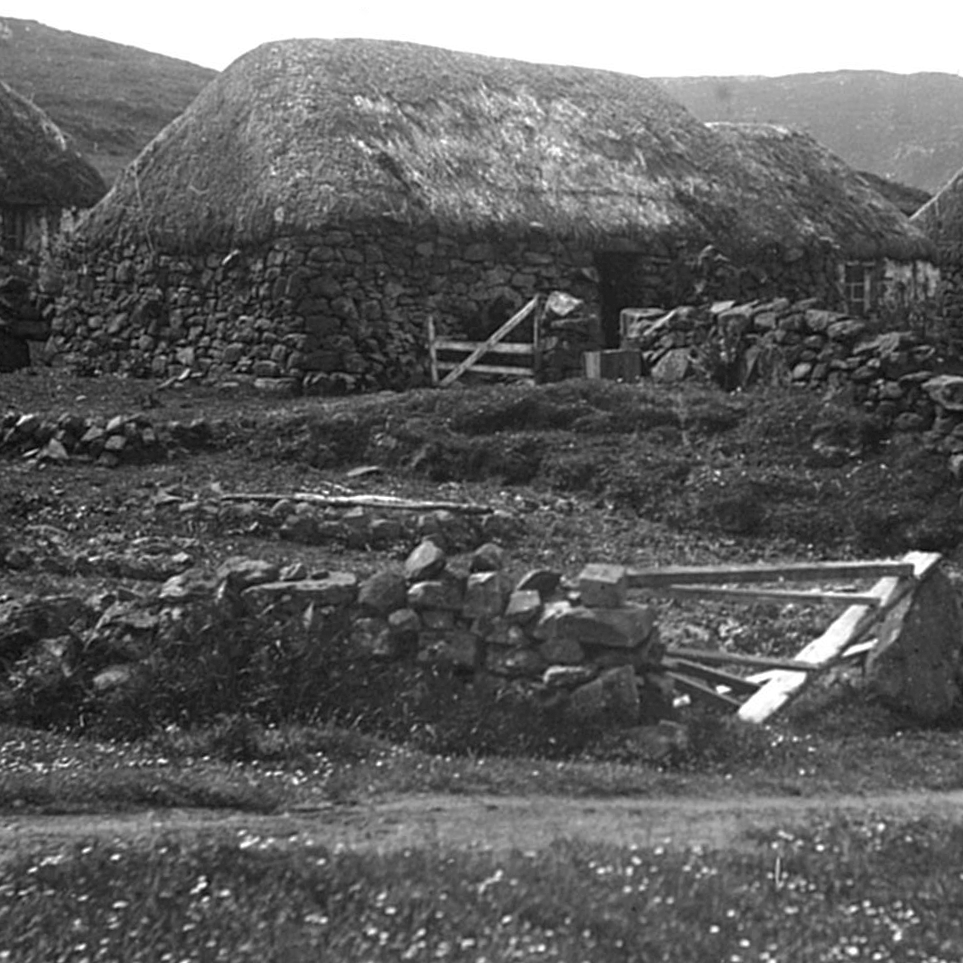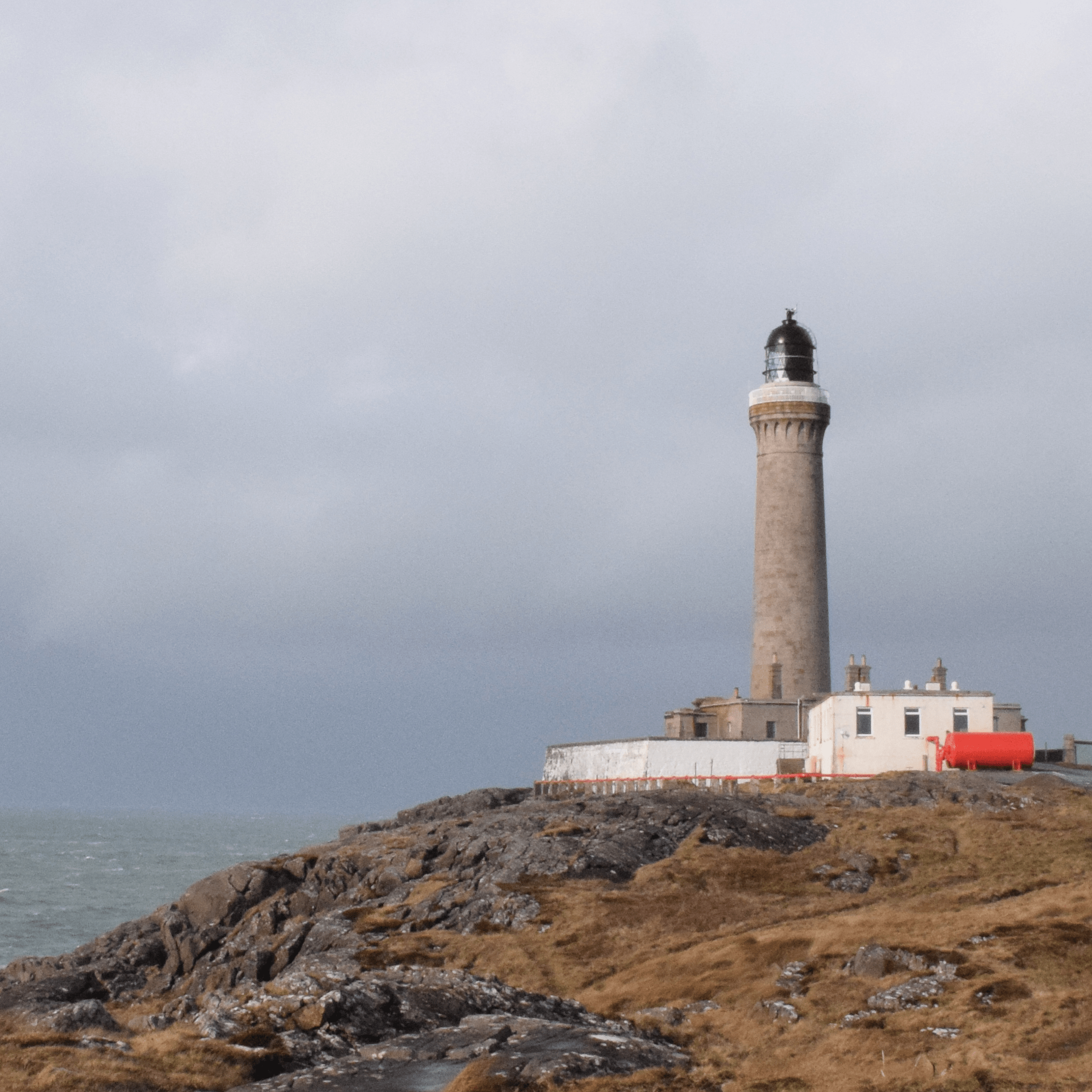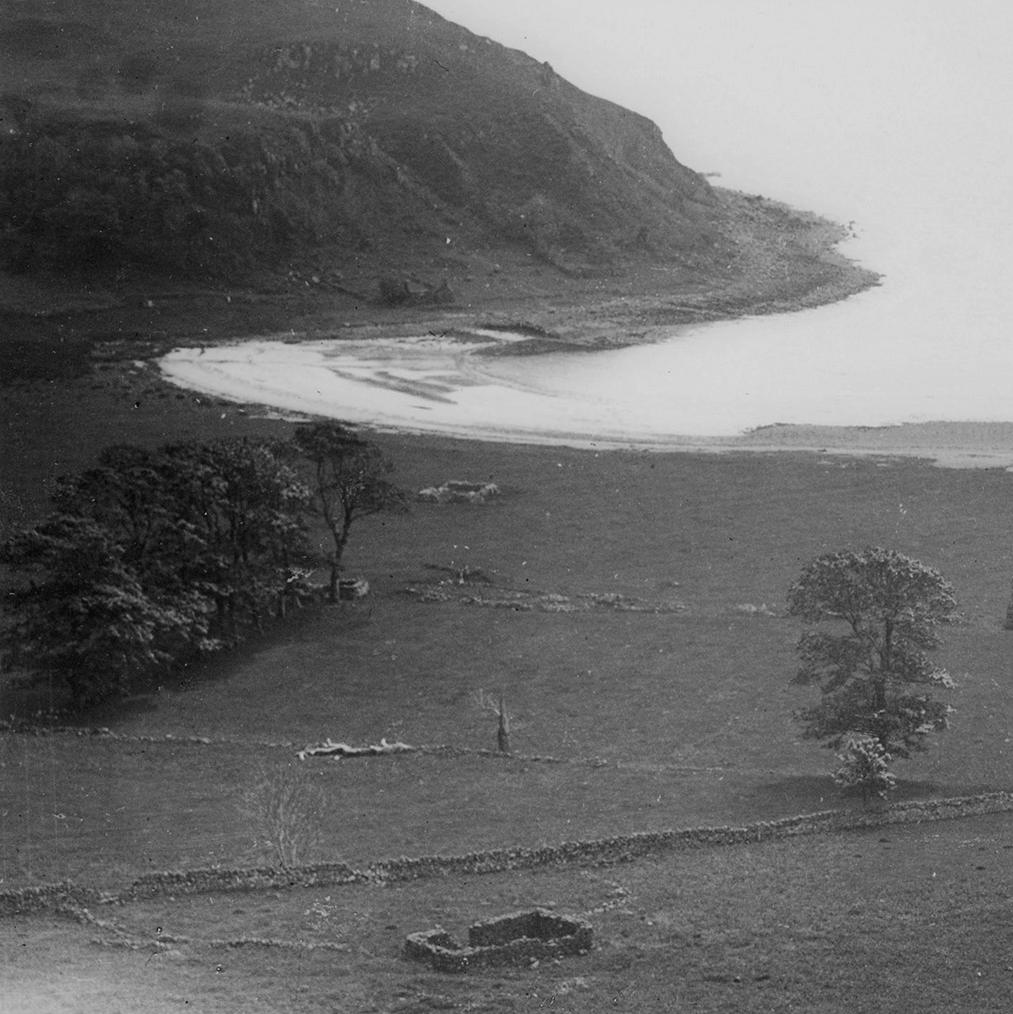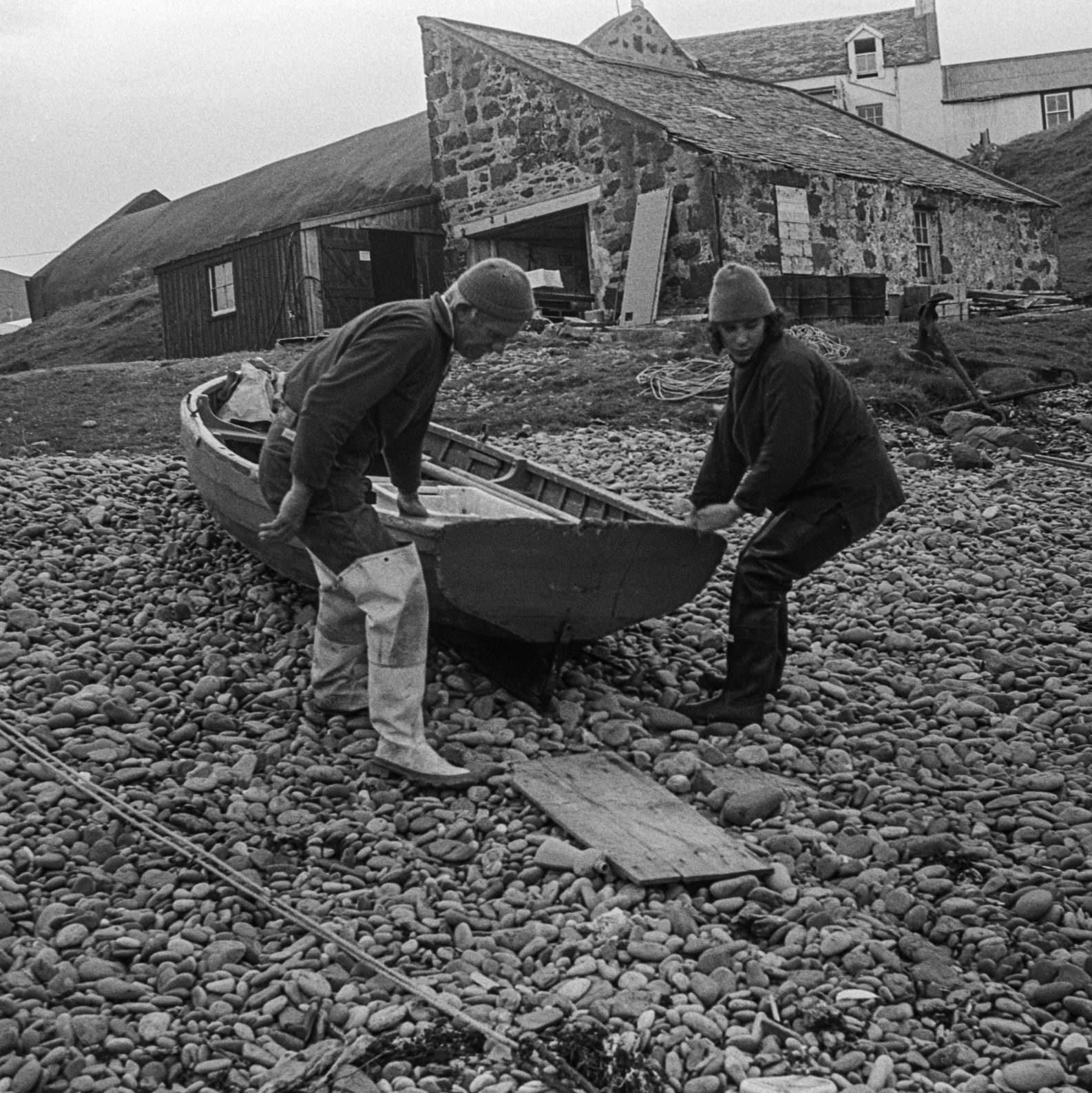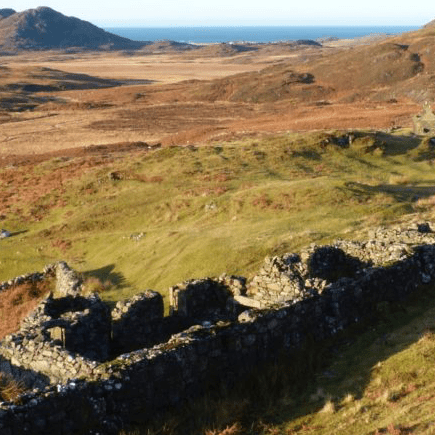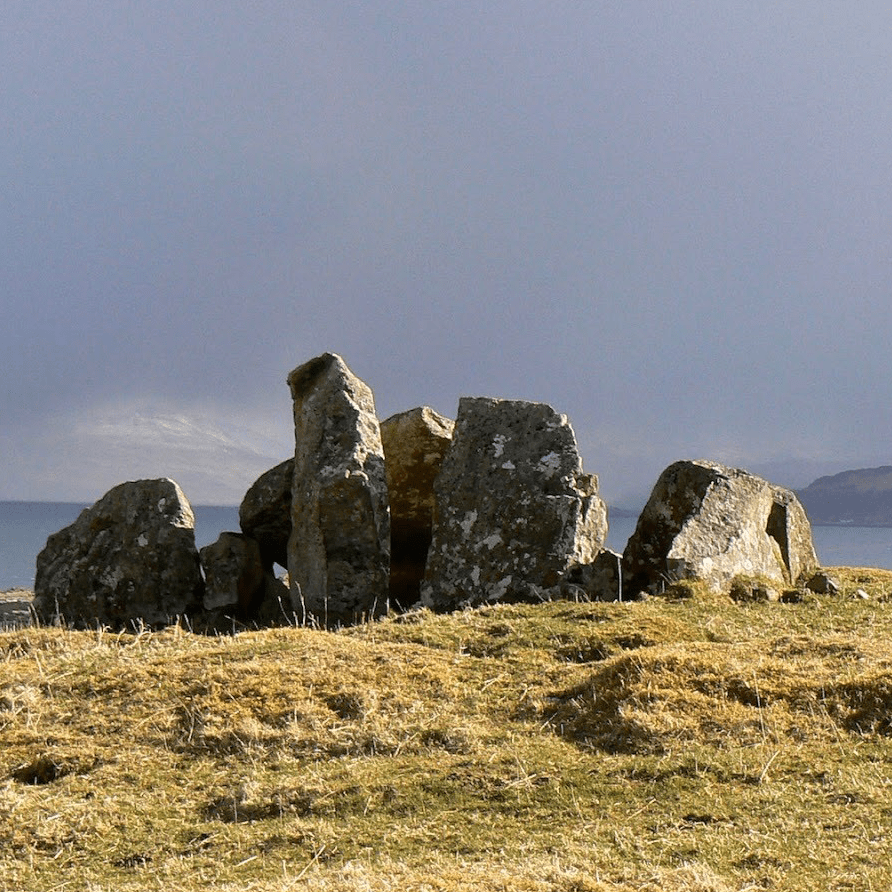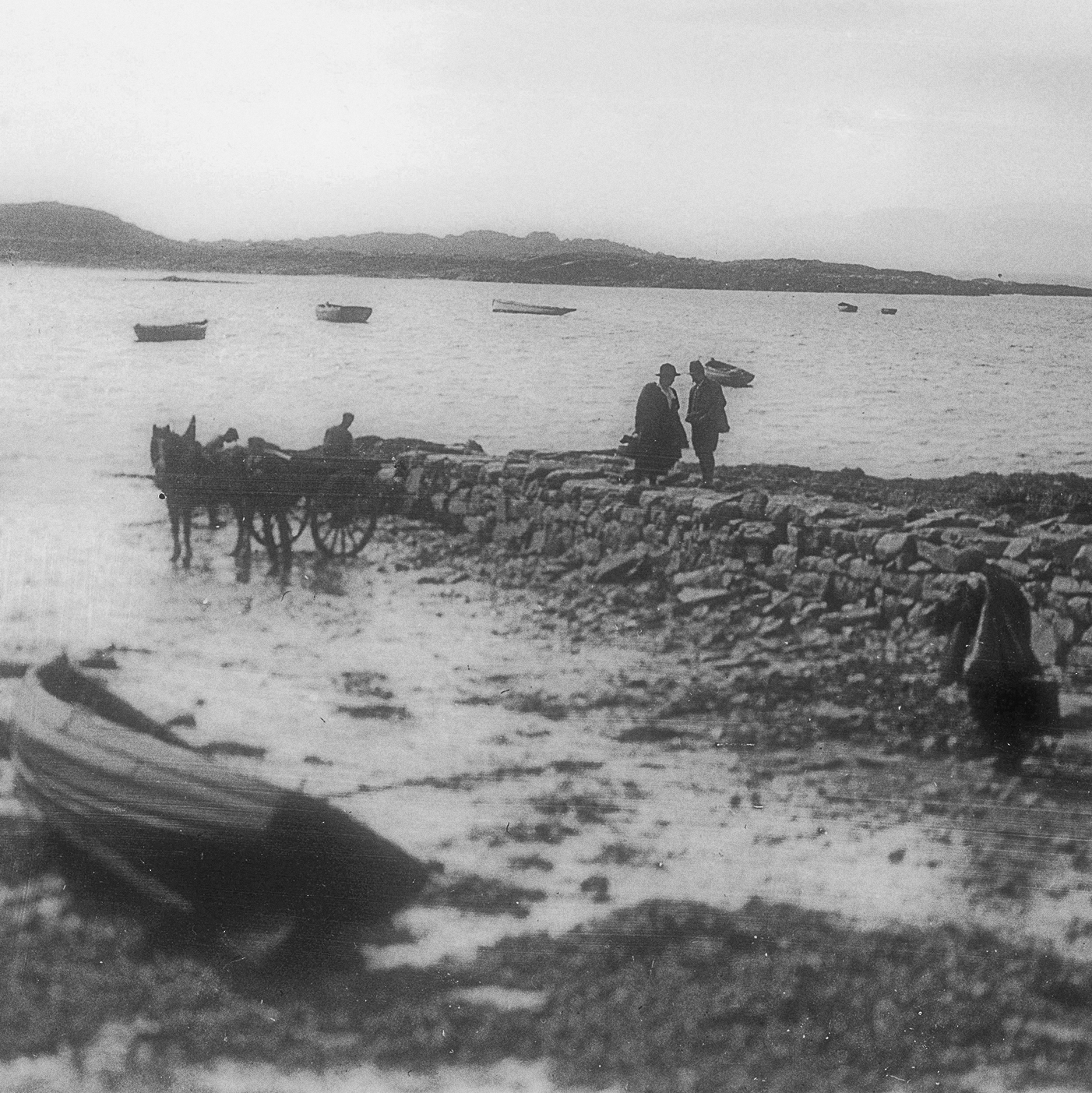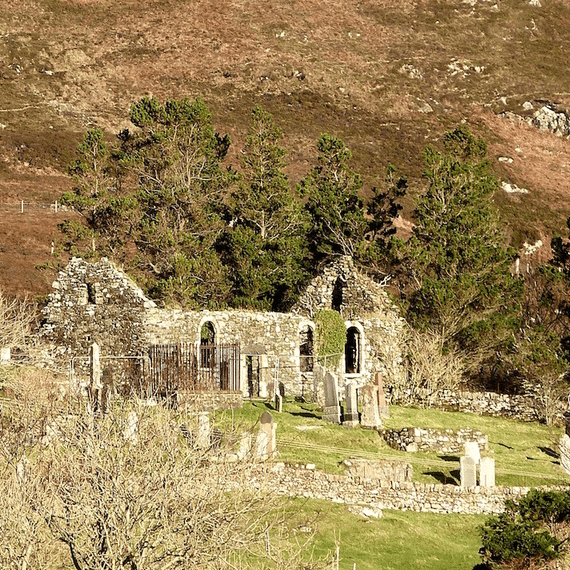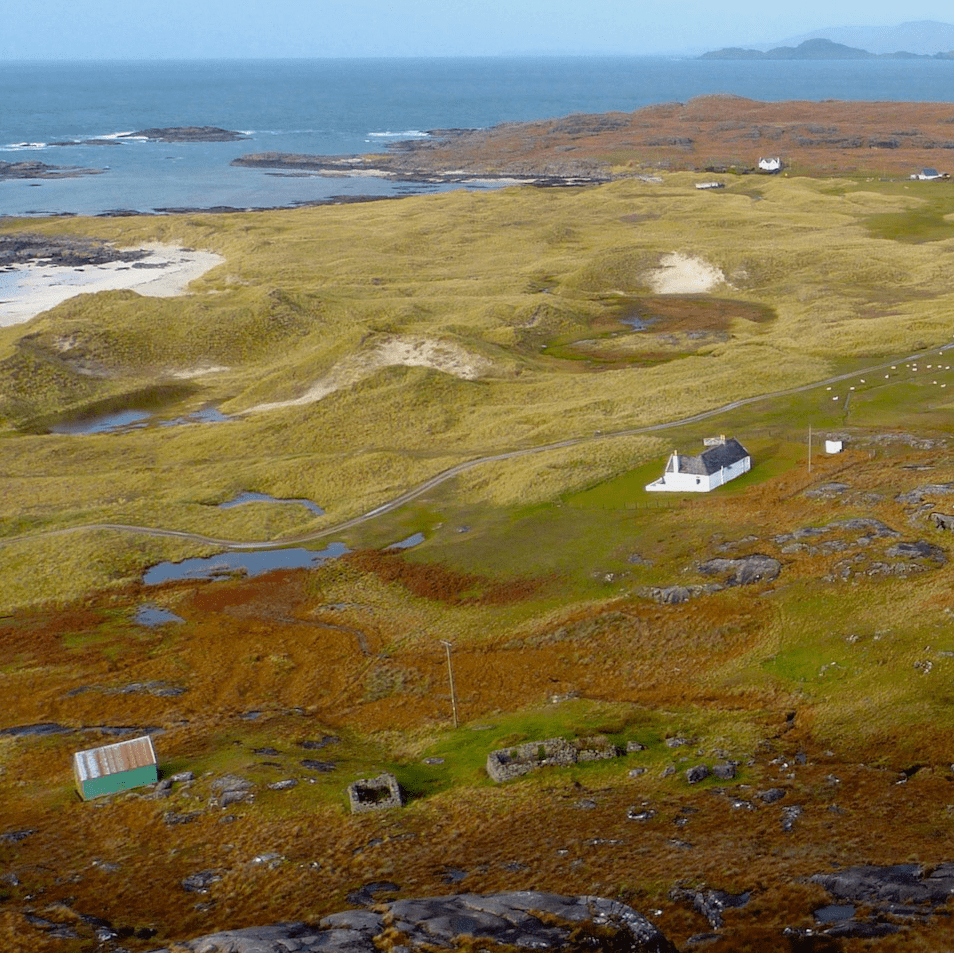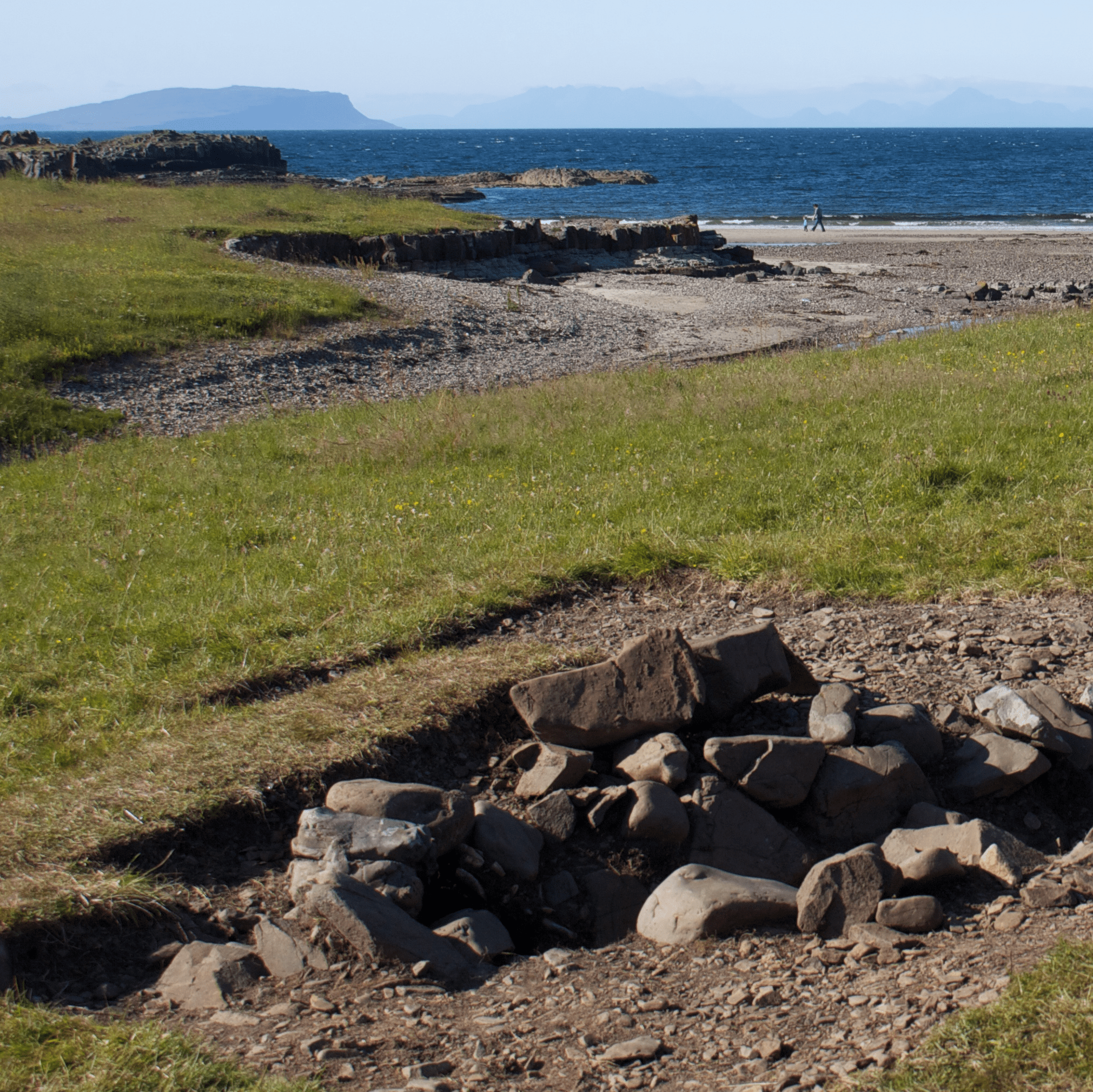The Swordle area hosts many archaeological sites with evidence of burials over the millennia, and activity from the Stone Age, Bronze Age, Iron Age, Viking and post-Medieval era.
One site that has been excavated is a Neolithic chambered cairn named Cladh Aindreis, dated around 6,000 years old. It has been altered over the millenia by subsequent settlers and inhabitants in the bay, with beaker pottery discovered, suggesting the Cairn was used for burials in the Bronze Age, some 2,000 years later.
The area has been the focus of the Ardnamurchan Transitions Project (ATP), a team of archaeologists from Archaeology Scotland, students and staff from the Universities of Manchester and Leicester as well as Ardnamurchan residents and community groups. In 2011, ATP discovered a complete Viking boat burial in the bay, not far from Cladh Aindreis. It was the first of it's kind to be discovered on mainland Britain.
